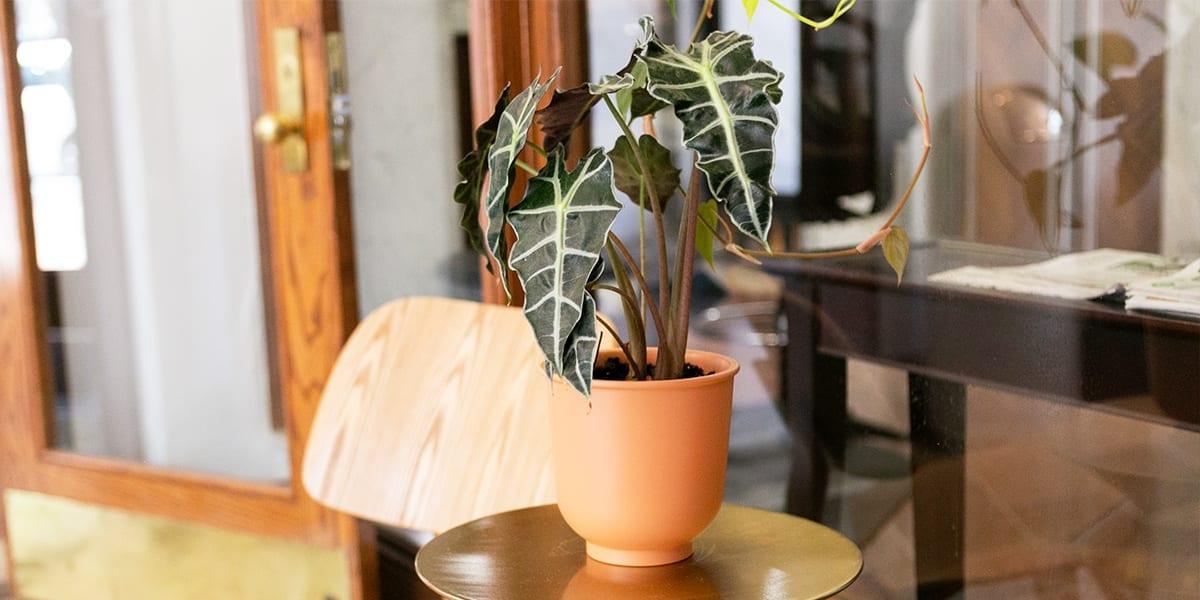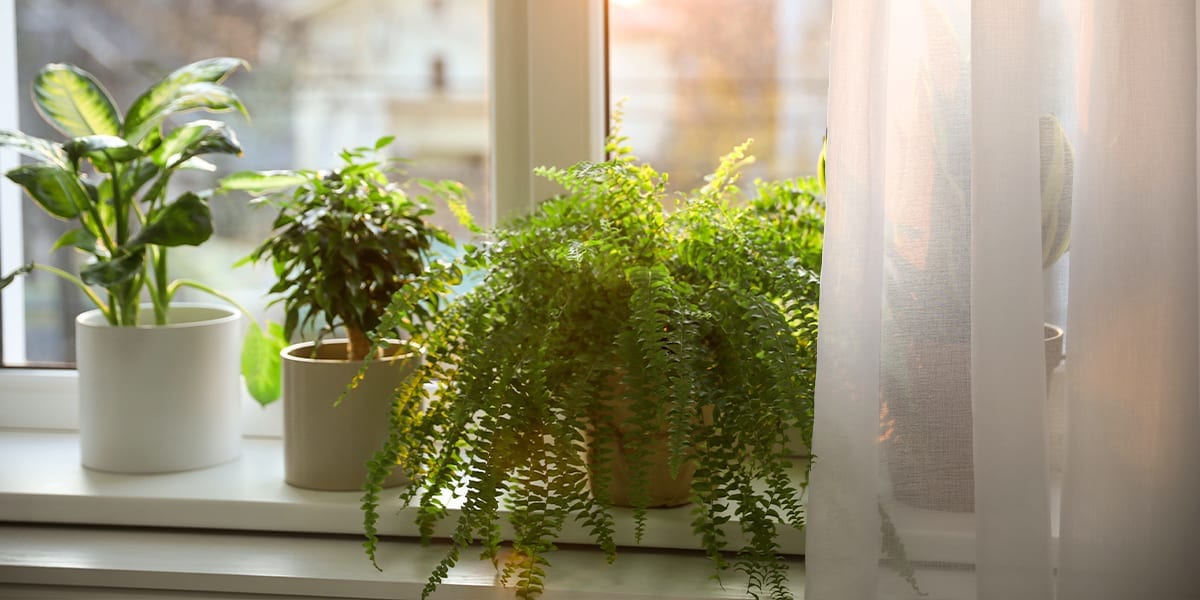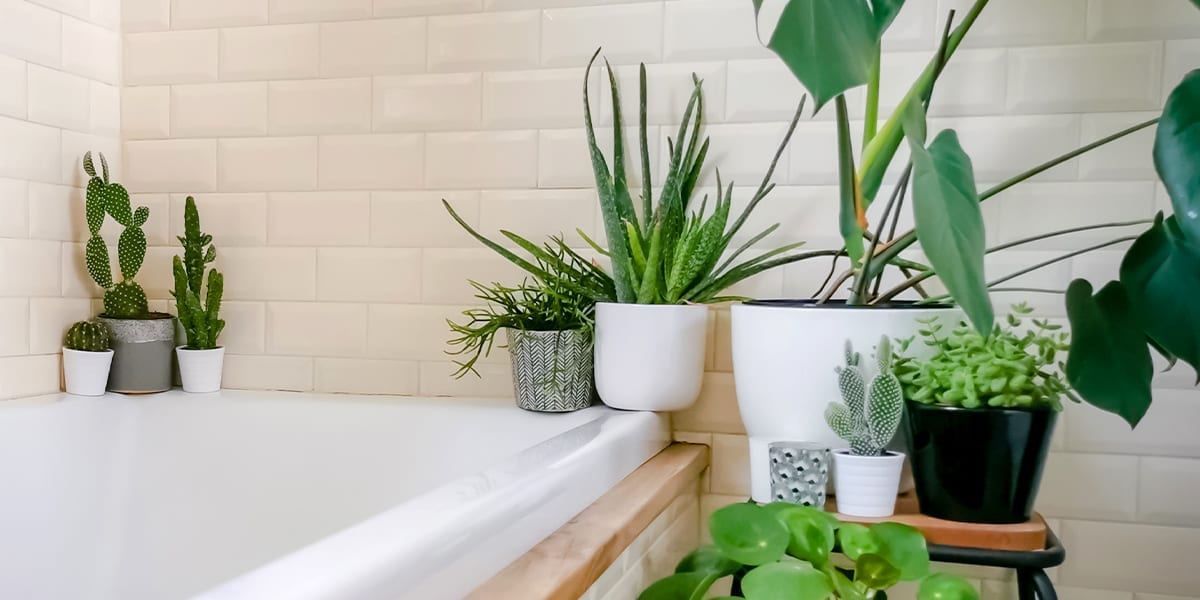Terracotta and ceramic are two of the most common planter materials around. While they have a lot in common, they do have specific differences that make certain plants better suited to one or the other. Let’s take a look at the features, benefits, and drawbacks of both of these popular pots, along with some gorgeous houseplants that work well in each.

Team Terracotta
Terracotta is easily the most recognizable material in the world of plant pots. You’ve probably seen hundreds of these rust-colored clay pots over the years. However, despite how common they are, terracotta pots aren’t necessarily the ideal living situation for all plants. The reasons someone might not choose a terracotta planter are the same reasons someone else might need one; they’re made from a porous material, which means they let more moisture and more air pass through, and they come with at least one big drainage hole in the bottom. Plants who are on “team terracotta” are those that rely on these features to control moisture in the soil. Most houseplants are better off too dry than too wet, and these pots are made to prevent roots for sitting in standing water. For plants that come from arid climates, excellent drainage is non-negotiable. Here are a few members of “team terracotta”:
- Succulents
- Cacti
- Mediterranean Herbs
- Moth Orchids
- Peperomias
- Pilea
- Hoya
- Snake Plant
Read more : How to Remove a Stuck On Garden Hose From a Spigot
All of these plants prefer periods of dryness before their next drink of water. This mimics the natural rhythm of rain and sunshine they’d find in their native environments.

Ceramic Fanatics
At a glance, you may think a ceramic pot is simply a terracotta pot with a good paint job. However, ceramic pots are typically glazed with a coat of lacquer that prevents the soil from drying out at the same speed as it would in an unglazed clay or terracotta planter. Some ceramic pots are sold without any drainage holes at all, which means the roots will sit in very wet conditions. If you choose to use these pots, you’ll be best off choosing a plant that can handle sitting in stagnant water—and your options will be limited. If you take care not to overwater and monitor the soil diligently, it’s certainly possible to keep houseplants in these environments. Still, you’ll save yourself a lot of trouble by opting for a pot with drainage holes. Even with drainage holes, the glazes on ceramics will still cause these pots to retain more moisture than unpainted terracotta. The best houseplants for ceramic pots are ones that prefer evenly moist soil—generally, ones that have adapted from damper environments in nature. A couple of “ceramic fanatics” include:
- Golden Pothos
- Spider Plants
- Baby’s Tears
- Boston Fern
- Maidenhair Fern
Of course, one huge advantage ceramics have over terracotta is their appearance. Compared to all the beautiful colors, patterns, and styles you can find in ceramic, terracotta can seem a little dull in comparison. If you want to plant a “team terracotta” plant in a ceramic pot without drainage holes, a few easy modifications will make a big difference. Just add a layer of coarse gravel, pebbles, or river rocks to the bottom of the ceramic pot cover and “nest” your houseplant’s nursery container inside. This will allow water to drain from the container and away from the plant’s roots.

Choosing a Pot
So, you’ve found the perfect houseplant at one of our plant nurseries in Chicagoland. Before you bring it home, your plant needs its own little home to live in as well! As you browse through our selection of pots, give the plant’s tag a read and get to know a little bit about its preferred environment. If it’s a desert plant or a plant that likes to dry out between waterings, it might be on “team terracotta”. If it’s a plant that came from a damp, boggy, or humid environment that likes damp soil, you might have a “ceramic fanatic” on your hands. If you’re having trouble finding the perfect pot for your plant (or the perfect plant for your pot!), you can always ask someone on our team for help. We’re happy to help you put together a winning combination!

Platt Hill Nursery is Chicago’s premier garden center and nursery.
Source: https://gardencourte.com
Categories: Outdoor


